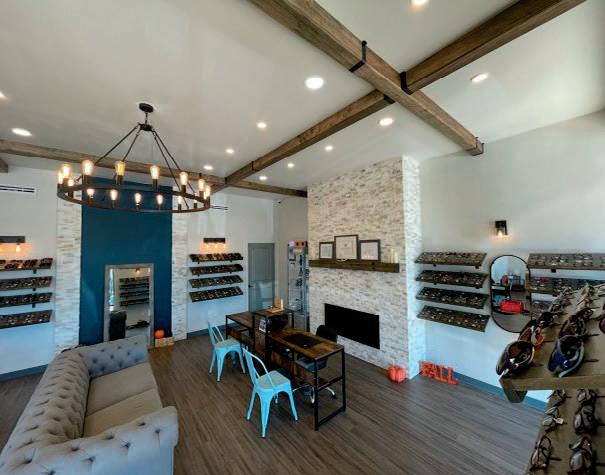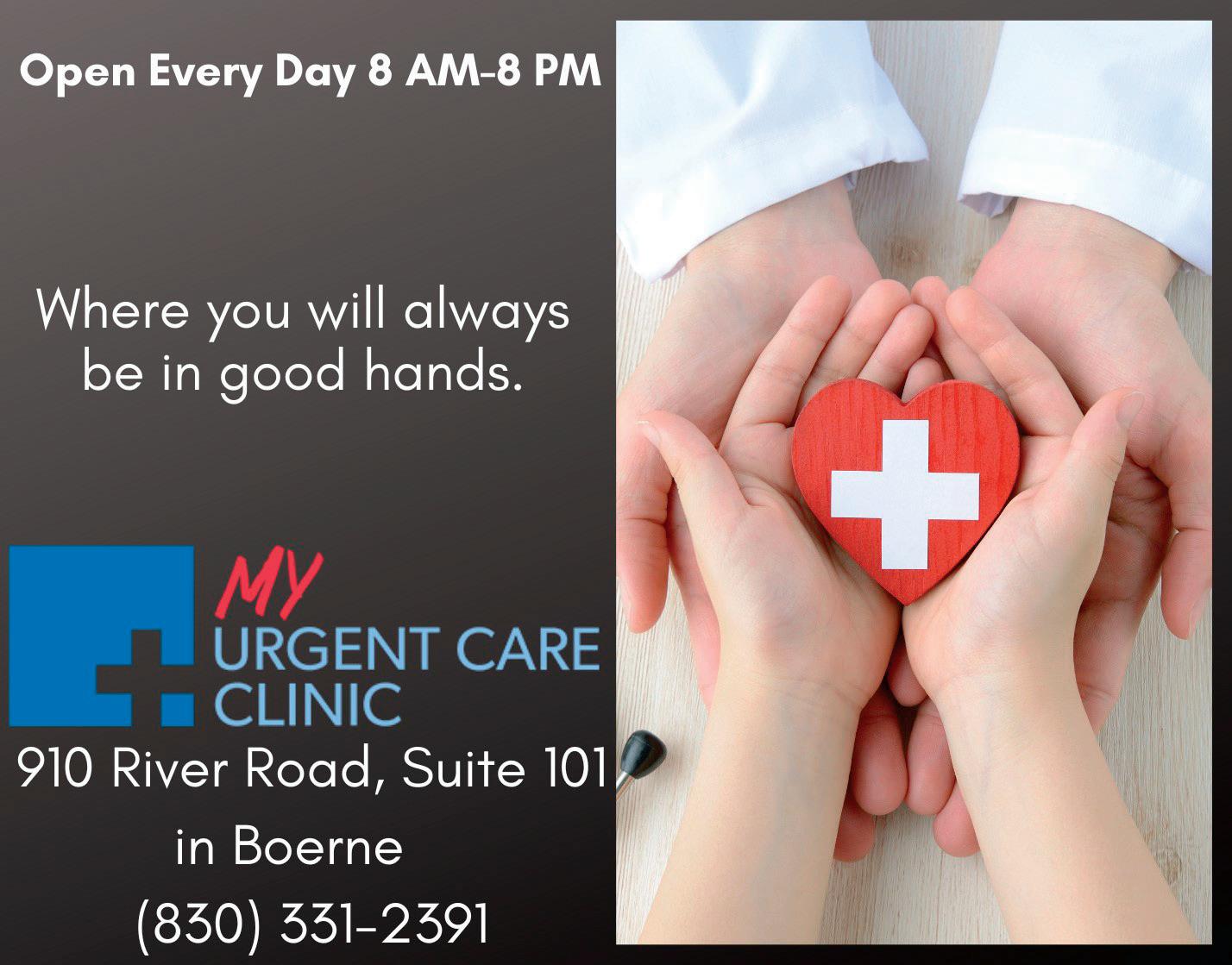
11 minute read
Medical Services
Finding a Primary Care Provider for you and your family
Babies and children are not just small adults—their healthcare needs are different. However, as a family it is important to schedule your annual wellness visit with your healthcare provider to learn more about the best ways to take care of your health. As you age and your children develop a healthcare provider is essential for routine care as well as illnesses or injuries.
What care does a primary
care provider give? Providers care for children and adults for annual exams, check-ups and to ensure you are maintaining overall health. As you are looking for a primary care provider, consider a provider or location that offers same day appointments and is near your place of work or home. Also, research if the practice is connected to a hospital or health care system in case emergencies arise.
Services provided:
• Well child care/ Annual wellness exams
• Preventive health including immunizations and screening • Support and Televisits • Health Education
• Guidance for parents, adults and caregivers • Care for illnesses and injuries • Referrals to specialists as needed
Making the most of your visit:
The following tips will help ensure you are prepared when you have your annual wellness visit. • Write down your questions in advance. Writing your questions in advance this helps ensure you don’t forget to mention something important.
• Bring someone with you. You can ask a loved one to sit in on the visit with you. Your friend or relative can serve as an advocate. Your friend or family member may have questions or observations that can help you get the best medical care.
• Bring your health records. Bring copies of personal health records. This is important if this is your first visit or if it’s been a while since you saw this healthcare provider. Let your provider know about any other healthcare providers you see. You might also want to bring information about the health of your close family members. Certain diseases and con-

ditions run in families. For example, if a brother, sister, parent, or adult child has been diagnosed with heart disease, diabetes, or cancer, your provider may want to add that information to your file.
• Bring a list of your medi-
cines and supplements.
Let your healthcare provider know what medicines you and your family take each day. Make sure to include vitamins, herbal remedies, homeopathic remedies, teas, supplements, and prescription medicines from all providers you see. If it’s too much for you to write down, bring them all in a bag to show the provider. Choosing a provider is an important decision, no matter your age. There are many things to consider from training and experience to office hours and routines. When choosing someone for you or your family, look to how healthcare is supposed to feel.

Information provided by Hill Country Memorial Hospital

Remarkable Primary Care in Boerne
Bertha Gaytan, MD Primary Care, Family Medicine HCM Medical Clinic–Boerne
Dr. Gaytan lives and works in Boerne, and welcomes new patients of all ages, including newborns. She is bilingual in English & Spanish. 1430 S. Main St., Suite 111 / Boerne (830) 428-2345 Schedule today

Meet Dr. Gaytan
hillcountrymemorial.org/doctors/bertha-gaytan-md
Tips to Keep Your Vision Healthy and Clear
Most of the information we receive from our surroundings comes through our eyes, so do your best to protect them. Follow these tips to give your eyes and vision the boost they need to stay healthy.
1. EAT A WELL BALANCED DIET
Consuming a healthy and balanced diet filled with lots of vitamins and nutrients can help keep your eyes healthy and strong. Vitamins A, E and C, along with zinc, lutein, and omega-3 fatty acids have all been shown to support eye health and function — and reduce the risk of sight-threatening eye diseases.
”Having a diet that contains dark, leafy greens like spinach and kale is great for those diagnosed or at risk for macular degeneration,” according to Dr. Ashlynn Dennington, optometrist at Texas State Optical in Fair Oaks Ranch. Macular degeneration causes loss in the center of the field of vision.
2. EXERCISE
Exercising for at least 20 minutes each day not only gets your body moving, but also improves blood circulation in the eyes. A regular exercise routine can also help you maintain a healthy weight and lower your risk of obesity — a risk factor for several diseases that cause vision loss in adults.
3. CONTROL YOUR BLOOD PRESSURE
Keeping your blood pressure within normal limits is not only important for your overall health, but for your eye health as well. High blood pressure can damage the tiny and fragile blood vessels that feed the retina, the light-sensitive tissue in the back of the eye, and result in blurred vision and vision loss. Maintaining a healthy, active lifestyle and taking the right medication, if prescribed, can help to reduce your blood pressure and your risk of vision loss.
4. WEAR SUNGLASSES
Wearing 100% UV protective sunglasses can protect your eyes from the sun’s harmful UV rays and reduce your risk of cataracts, age-related macular degeneration and other sight-threatening eye conditions.
“Don’t squint but use shades and your eyes will thank you. Most or our UV light radiation is absorbed by the time we are 18 years-old, so sunglasses for kids are very important,” according to Dennington.
5. REST YOUR EYES
Spending hours each day in front of a computer screen or other digital device can lead to eye strain, fatigue and dry eye symptoms.

Practice the 20-20-20 rule to give your eyes their much needed break — every 20 minutes, tear your eyes away from the screen and look at something at least 20 feet away for at least 20 seconds.
6. QUIT SMOKING
Smoking is hazardous to your health and affects nearly all the organs in your body, including your eyes. Cigarette smoke in particular contains toxins that have been shown to cause cerebral lesions in the visual processing area of the brain.
Smoking tobacco has also been linked to higher risks of sight-threatening eye diseases including age-related macular degeneration, cataracts and diabetic retinopathy. “Smoking is also the number 1 cause for progression of age-related macular degeneration,” said Dennington.
7. SCHEDULE REGULAR EYE EXAMS
Regular eye exams are a crucial part of maintaining eye health and vision. Comprehensive eye exams can detect early signs of eye disease, even before symptoms appear — facilitating earlier treatment and lowering your risk of permanent vision loss. “The eye is the only place in the body we can see blood vessels in action, leading to the diagnosis of many systemic conditions,” according to Dennington.
If you’re due for a routine checkup, you’ve noticed any changes in your vision, or you’d like to learn more about protecting your ocular health, arrange for an eye exam today. “The eyes aren’t only the windows to the soul, they are the windows to our whole body and health,” said Dennington.
Article courtesy of Texas State Optical in Fair Oaks Ranch

Texas State Optical
New Doctor. New Location. New State of the Art Equipment.
Schedule your appointment today! 210-698-6393
9091 Fair Oaks Parkway, Suite 306
Dr. Ashlynn Dennington

Ranch Division Ranch Division & Luxury Collection & Luxury Collection











bhhshillcountryproperties.com bhhshillcountryproperties.com





MORRISMO ORRIS KILLOUGHKILLOUGH
Sara Moore,Sa ara Moore, REALTORREALTOR 210.870.0309210.870.0309




32840 IH-10 W l Boerne, TX32840 IH-10 W l Boerne, TX 830.816.5151 830.816.5151
In An EmergencyIn An Emergency
When it comes to your health, it’s best to know your options in terms of quality care providers and treatment facilities. Fortunately, there’s no shortage of either in our area. From general practitioners and primary care physicians to specialists in a particular area of medicine, one doesn’t have to travel far to receive the best care. Likewise, we’re also fortunate to have stateof-the art healthcare facilities in the area. There are many options available when you need treatment for an illness or injury, including your physician, an urgent care center or the hospital emergency room. Health insurer Blue Cross Blue

... you’ll find plenty of local health care options When it comes to your health, it’s best to know your options in terms of quality care providers and treatment facilities. Fortunately, there’s no shortage of either in our area. From general practitioners and primary care physicians to specialists in a particular area of medicine, one doesn’t have to travel far to receive the best care. Likewise, we’re also fortunate to have stateof-the art healthcare facilities in the area. Shield (BCBS) offers advice to help you decide which option is best according to the nature of your ailment. There are many options available when you need treatment for an illness or PRIMARY CARE injury, including your physician, an urgent Your primary care physician is your first care center or the hospital emergency option when your condition is not an emerroom. Health insurer Blue Cross Blue gency. Your physician is familiar with your history and medications you may be using.
... you’ll find plenty of local health care options Urgent Care Urgent care center physicians, assistants and nurse practitioners provide care for a great range of conditions, including performing x-rays. According to the Cleveland Clinic, an urgent care center is designed to handle conditions that are not life-threatening, but should be treated within 24 hours. These include sprains and strains, sinus infections, ear infections, allergies, especially those that get worse during certain seasons, minor Shield (BCBS) offers advice to help you cuts and burns, headaches and dizziness. decide which option is best according to the nature of your ailment. Check to make sure the urgent care center is covered by your health insurance plan. PRIMARY CARE Your primary care physician is your first For emergencies, dial 911 option when your condition is not an emerKendall County EMS crews and ambu- gency. Your physician is familiar with your history and medications you may be using.

lances are based in Boerne, Comfort and Bergheim, supported by first responders from all seven county fire departments. This provides faster care for those in remote locations in the county. In Fair Oaks Ranch, Acadian Ambulance Services crews are dispatched along with Leon Springs Volunteer Fire Department first responders and Fair Oaks Ranch Police.

Parents know who they should go to when their child is sick. But pediatrician visits are just as important for healthy children. The Bright Futures/American Academy of Pediatrics (AAP) developed a set of comprehensive health guidelines for well-child care, known as the “periodicity schedule.” It is a schedule of screenings and assessments recommended at each well-child visit from infancy through adolescence.
THE BENEFITS OF WELL-CHILD VISITS:
• Prevention. Your child gets scheduled immunizations to prevent illness. You also can ask your pediatrician about nutrition and safety in the home and at school. • Tracking growth and development. See how much your child has grown in the time since your last visit, and talk with your doctor about your child’s development. You can discuss your child’s milestones, social behaviors and learning. • Raising concerns. Make a list of topics you want to talk about with your child’s pediatrician such as development, behavior, sleep, eating or getting along with other family members. Bring your top three to five questions or concerns with you to talk with your pediatrician at the start of the visit. • Team approach. Regular visits create strong, trustworthy relationships among pediatrician, parent and child. The AAP recommends well-child visits as a way for pediatricians and parents to serve the needs of children. This team approach helps develop optimal physical, mental and social health of a child.
SCHEDULE OF WELL-CHILD VISITS:
• The first week visit (3 to 5 days old) • 1 month old • 2 months old • 4 months old • 6 months old • 9 months old • 12 months old • 15 months old • 18 months old • 2 years old (24 months) • 2 ½ years old (30 months) • Annually 3 -21 years old Source: American Academy of Pediatrics, 2018. healthychildren.org/family-life/healthmanagement/Pages/Well-Child-Care-Check-Up-for-Success.aspx











